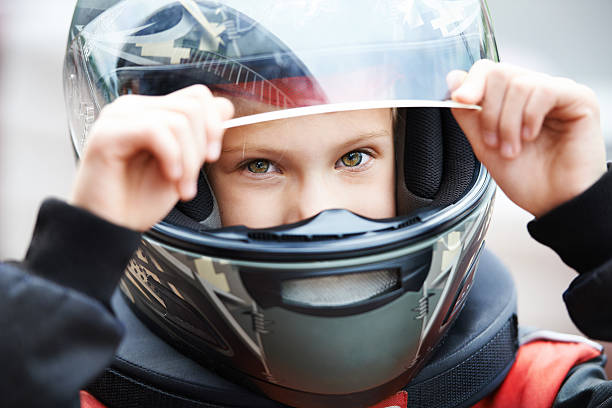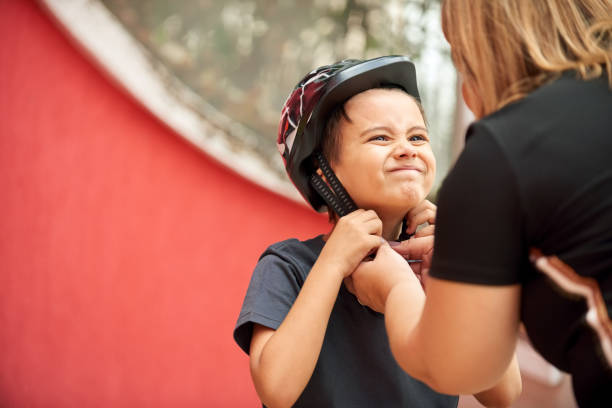
When purchasing a child’s bike helmet, the most critical consideration is correctly understanding kids’ helmet sizes. Nothing else matters if you buy the wrong size! However, numerous more elements of a helmet make it easier or more challenging to adjust and alter how comfortable it is to wear! In addition, there are other helmets explicitly designed for biking, scootering, and skating. So, what else should you look for in a bicycle helmet?
1. Getting the proper adjustment.
Any helmet worth purchasing should have an internal adjustment system to ensure a correct fit. Because children’s head shapes and sizes vary widely, internal adjustment systems allow the helmet to fit a wide range of head sizes, allowing the helmet to stay in position and better protect the child.
Dial-Adjust: The most popular adjustment system in a kid’s motorbike helmet is a dial positioned on the back of the helmet. The inside cage adapts to fit a child’s head by twisting the dial. Because helmets have a limited range of adjustment, it is critical to get a perfect size.
Pads Width Adjustable: Many skater-style and low-end bicycle-style helmets do not include an adjustment system but somewhat different pads of varying thickness. Before donning the helmet, parents must insert the appropriate pad thickness to create a snug fit. Unfortunately, this “adjustment method” is limited and frequently leads to a bad fit.
Lazer Self-Adjust: The Lazer Autofit system automatically adjusts to the wearer’s head size. The mechanism adapts by using a tension wire encased in a plastic casing, which allows the inside cage to extend to accommodate a child’s skull.
A few available helmets do not allow you to modify the sizing. These helmets should be avoided at all times.
Sliders for Straps: The strap sliders, in addition to the internal-adjust system of a kids’ motorbike helmets, play a crucial part in maintaining a helmet properly on a child’s head. The chin straps on a helmet should form a “V” immediately below the child’s ear to prevent the helmet from tilting forward or back.
Plastic sliders keep the straps together and allow them to continue to the buckle. The helmet is far more prone to fall forward or back on a child’s head if it is not appropriately situated below the ear.
2. Multiple Impact Protection System – MIPS
MIPS is an additional safety feature available on several high-end helmets. MIPS, which stands for Multi-directional Impact Protection System, allows the energy from a crash impact to be handled by the helmet regardless of the direction of the effect.
MIPS has been found in studies to reduce brain damage by 30%. The system consists of a non-obtrusive inner plastic cage with flexible rubber anchors attached to the foam core. The anchors expand upon impact, allowing the foam core to revolve around the child’s head.
3. CSPC/ASTM Safety Certifications
All helmets sold in the United States must meet CPSC (Consumer Product Safety Commission) requirements and bear a sticker. All bike helmets sold in the United States are thus “safe” in terms of providing protection, but only if correctly fitted and adjusted to a child’s head. In addition, higher-end helmets are better fit and stay in place more securely than lower-end helmets; therefore, we believe they provide superior overall protection.
Helmets are exclusively certified for specific sports and should be used only for certain activities. For example, all CPSC-approved helmets for kids biking are also permitted for in-line skating, scooters (including low-speed, motor-assisted), and hoverboards.
4. Buckle type in the helmets

A buckle may not appear to be a huge concern, but children who are pinched when trying to tighten a helmet are less likely to wear them, which sometimes leads to unnecessary conflicts with parents. As a result, several firms have designed “pinch-free” buckles to prevent pinching.
Published by HOLR Magazine.


